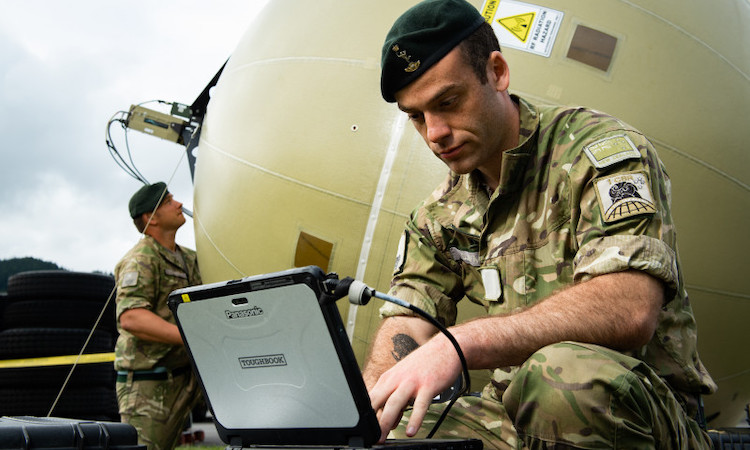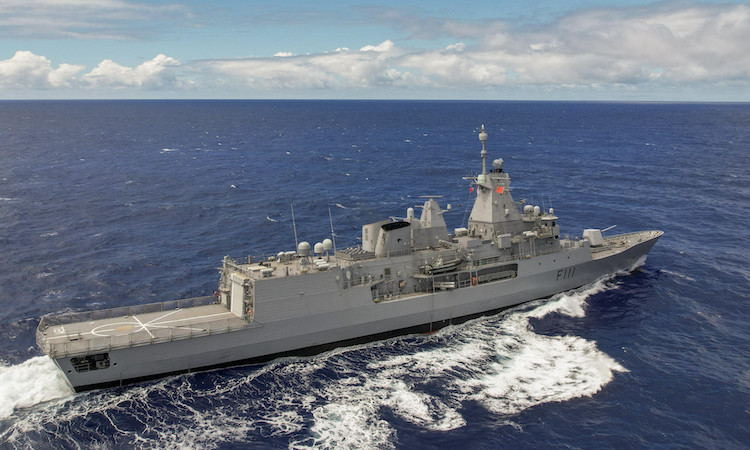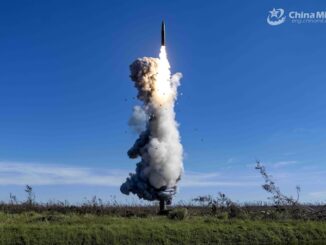
Recent commentary suggests that NZDF combat skills and interoperability have degraded over time, but remedial work is now well underway, writes editor-at-large Dr Peter Greener. Nevertheless, there are big capability decisions that need to be made, and soon.
In his article in the Winter issue of Line of Defence, National Party: Attrition, conditions of service, and interoperability, Tim van de Molen, National Party Spokesperson for Defence and Veterans, expresses concern about attrition across the Defence Force, highlighting that, “Since 2020 this government has seriously neglected the NZDF. 89% of personnel are paid at least 5% below comparable civilian rates.”
He subsequently spells out National’s four-point Plan for Defence. In the second strand of the policy, while supporting the additional funding provided by Labour for remuneration, a pay review, enhanced living conditions and greater work variety are promised.
It is a fact that governments led by both National and Labour oversaw a reduction in defence spending from a maximum of 2% during the 1980s, to less than 1% of GDP over the next two decades.
It is of note that in April of last year, Christopher Luxon indicated that National supported a lift in defence spending from the current level of approximately 1.5% perhaps to 2% of GDP, yet Tim van de Molen gave no funding indication.
It is a fact that governments led by both National and Labour oversaw a reduction in defence spending from a maximum of 2% during the 1980s, to less than 1% of GDP over the next two decades. Whilst there has been some recovery, budgets over time have been inconsistent.
This was remarked on by Chief of Defence Force Air Marshal Kevin Short in the March 2023 issue of North and South magazine. Here Air Marshall Short emphasised, “We need governments – no matter which [party] comes to power – to look at the NZDF and say, ‘We’ve got to look 10, 20, 30 years ahead’ and have consistent funding.”

Image: NZDF.
Interoperability and interchangeability
In the third strand of National’s Plan for Defence, Tim van de Molen notes, “National will focus on improving our interoperability with our traditional partners given the rising geopolitical tension.” He then goes on to say that National will commit to supporting NZDF personnel to undergo more training with allies and regional partners and to cooperatively share defence knowledge.
That theme of interoperability is also highlighted by Dr James McDowall, ACT Party Defence Spokesperson, in his article New Zealand needs to get serious on defence (Line of Defence, Winter 2023). Here he argued that, “There is no hiding the fact that the New Zealand Defence Force has been through an extremely tough time over the last few years.”
With, as Tim van de Molen had indicated, the loss of 30% of personnel from across the Defence Force over the last two years, and a lack of opportunity to exercise combat skills, he is absolutely correct. To address the issues NZDF is facing, ACT is advocating an increase in spending to 2% of GDP over a four-year period.
… neither spokesperson acknowledges the considerable remedial work which is already underway across all three Services to enhance training and combat capability, and more particularly interoperability, with Australia.
Highlighting the degradation of combat skills, he observes that over time, NZDF personnel may once again have to play a larger role in conflict zones. However, he goes on to speak of New Zealand’s “irrelevance” to our only formal defence ally, Australia, then adds, “Under Labour, New Zealand has gone from being an ANZAC partner to being an afterthought.”
Yet neither spokesperson acknowledges the considerable remedial work which is already underway across all three Services to enhance training and combat capability, and more particularly interoperability, with Australia.
Of particular note is Plan ANZAC. This is the Bilateral Service Cooperation Plan that was signed by Chief of the New Zealand Army Major General John Boswell and Chief of Australian Army Lieutenant General Simon Stuart on 18 April 2023. Major General Boswell indicated that, “We will be able to better share lessons across capability development, doctrine for training, and many other areas related to the generation, and in the New Zealand Army’s current case, the regeneration of land combat capability.”
The New Zealand Herald that day noted that the strategy would assist the New Zealand Army in enhancing its capability in joint force operations as well supporting “the enduring traits of the Anzac alliance, such as close integration in capabilities, training and readiness.”
Two months later Tim Fish, writing in the Australian Defence Magazine of 16 June 2023, added rather more detail to Plan ANZAC. He reported that there were to be two outcomes for the Plan. The first of these was that ultimately NZ Army would be “capable of contributing a Motorised Infantry Battle Group in an Australian-led Brigade within an integrated ABCANZ [American, British, Canadian, Australian, New Zealand] Division”. There was though an acknowledgement that this would take some time because of the current retention issues within Army.
The Bilateral Service Cooperation Plan is undoubtedly ambitious, and the Plan’s second outcome envisages an eventual result that would see that, “sustained cooperation between Armies is resourced, managed and (would) support interoperability… progressing to interchangeability.” This would ensure the, “tactical interchangeability of the NZ Army platforms and operational level interoperability of the respective Land and Special Operations Forces.” Training integration will see the adoption of Australian Army Doctrine, which is seen as a critical element for ensuring operational interoperability.
Given this potential level of integration, it is important to note the observation of the Director of Army Strategic Engagements in Army News Issue 542 (May 2023) that, “Our Army will retain all sovereign functions expected of it.”
The intention is for New Zealand Army elements to be fully interchangeable with their Australian counterparts, though all the time remaining under New Zealand sovereign command and control. Initial training systems, land support capabilities, and of most importance the unique culture of Ngāti Tūmatauenga will be retained. This will allow New Zealand forces to offer an enhanced independent capability to deploy wherever the Government requires, either as a stand-alone force or with our military partners.

HMNZS Te Mana retuning from upgrade in Canada, which included the installation of Sea Ceptor surface-to-air missiles, in July 2022. Image: NZDF.
Talisman Sabre and Te Mana
Another engagement of note between Australian and New Zealand forces, and international partners, is Exercise Talisman Sabre, a major biennial combined (i.e. international) and joint (i.e. Army, Navy and Air Force, and Marines) exercise. This year’s Exercise, which sees 30,000 uniformed personnel from thirteen different countries participating, is taking place from 22 July to 4 August 2023.
The NZDF contingent comprises all three Services, though NZ Army forms the largest group, with almost 250 soldiers taking part. Whilst the Green Party has raised concern about New Zealand’s participation in this year’s Exercise, my colleague Professor David Capie, from the Centre for Strategic Studies at Victoria University of Wellington, when speaking with Radio New Zealand on 30 July 2023, said that, “New Zealand’s involvement in Exercise Talisman Sabre was a timely return to combat readiness for the defence forces.”
Whilst the Royal New Zealand Navy has only a small contingent participating in Exercise Talisman Sabre, a rather larger group are crewing HMNZS Te Mana, which is in Australian waters at the same time. Having departed New Zealand on July 17th, Te Mana is embarking on a five month deployment that will take the ship from Australia up into Southeast Asia.
Whilst in waters around Australia, Te Mana will undergo exercises utilising advanced training capabilities in Australia which are not available in New Zealand. The deployment to Australia will include the first firing of the ship’s new Sea Ceptor missile system, (in fact the first firing of a missile from a RNZN ship in ten years) and will conclude with the ship being re-certified for combat operations.
Te Mana will later be joined by HMNZS Aotearoa and once initial training with the Australian Defence Force is completed, the RNZN Task Group will deploy to Southeast Asia. Following a range of port visits and bilateral exercises, the Southeast Asian deployment will conclude with participation in another significant multilateral exercise alongside other Five Power Defence Arrangement (FPDA) members in Exercise Bersama Lima, which is scheduled for October.

Image: NZDF.
Naval capability horizon
However, whilst this return to military activity is welcome news for those on board the Task Group, it remains the case that three Navy ships remain tied up alongside at Devonport in ‘care and custody’ whilst Navy continues to struggle with recruitment and retention.
Elsewhere in the Winter issue of Line of Defence, former Defence Minister Wayne Mapp and Captain Andrew Watts both respectively speak of the crucial need for a clear strategy to improve Navy’s capabilities into the future.
We shall see soon what policy position Labour will take with the imminent release of the Defence Policy and Strategy Statement.
Although not contributing to the Winter issue, Labour cannot escape comment. In April this year Prime Minister Chris Hipkins told Radio New Zealand that, “We have some big decisions ahead of us … in terms of capability we have in our Defence Force.” He went on to say that, “We’ve got some decisions ahead for the navy, we know that in the next 10 years or so we’re going to have to make some decisions about the future of the Anzac frigates.”
The Defence Capability Plan 2019, when discussing planned investments in maritime capabilities, noted that the service lives of the ANZAC frigates would be extended until beyond 2030. When the ANZACS were built, it took ten years from the government’s decision in July 1987 to proceed with ship replacement to the commissioning of the first vessel, HMNZS Te Kaha, in July 1997. A decision on replacements for the ANZACS needs to be under consideration without delay.
As Wayne Mapp states, “Security relationships require a certain level of commitment, if they are to be taken seriously… at a sufficient level to be seen to be making a useful contribution.” We shall see soon what policy position Labour will take with the imminent release of the Defence Policy and Strategy Statement. What is clear, is that whoever is in government following the election will be facing some of the most crucial decisions in decades with regards to the future of the New Zealand Defence Force.









Thanks to Peter Greener for this admirable summary. If I may I’d draw attention to my previous commentary in LoD, in which I point out that the entire naval fleet wears out in the early 30s, which gives us an opportunity to design a fleet that as a whole delivers the policy outcomes sought by government in a way that can be sustained over time. My other key point is that meaningful combat capability is not beyond our reach, provided we take advantage of maturing technologies and think beyond like for like replacement.
Hi Andy, thank you for your comments, and for the contributions that you have made to the debate. I wanted to take the opportunity to draw attention to your article, Tier 2 Surface Combatants – a new Anzac naval program? that you wrote for the Australian Naval Institute. It certainly provides some food for thought.